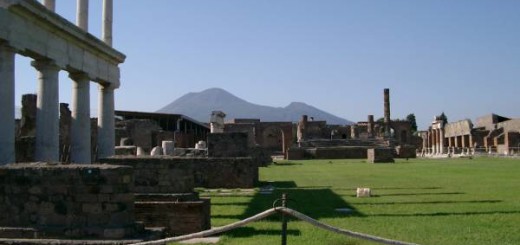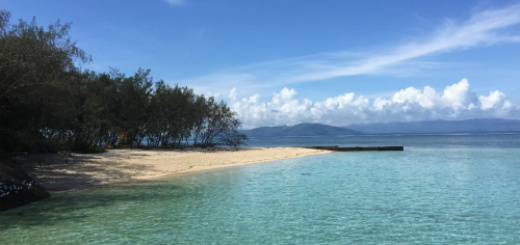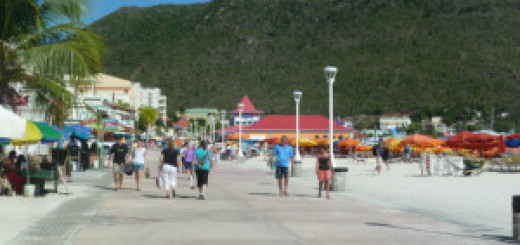Český Krumlov – a Bohemian Gem

At this stage of our river journey through Europe we were given an option to take a side trip to either Český Krumlov in Czechia (the Czech Republic), or Salzburg, Austria. Since we would be visiting Salzburg further on in our travels we opted for Český Krumlov. It had been given glowing reports by friends and family who had been there, so we were keen to see what the raves were about.

Declared a UNESCO World Heritage Site in 1992, due to its well-preserved array of historic houses spanning the 14th and 17th centuries, the city rests on a horseshoe bend of the Vltava River in southern Bohemia and boasts one of the finest castles of Czechia.
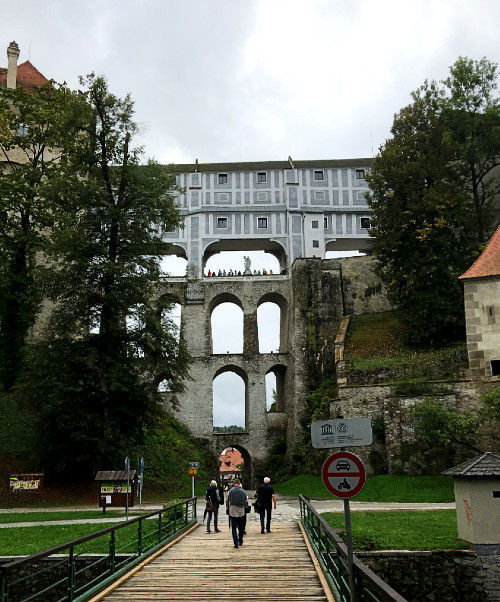
Crossing a wooden pedestrian bridge from the bus park over the Polečnice stream, we were amazed by the sight of a gigantic three-storied stone-pillared bridge ( “na plášti” or Cloak Bridge) spanning a defensive ravine and linking two of the castle courtyards. Along the top, the lower enclosed passage links the Masquerade Hall with the Castle Theatre, and the top passage links the Castle Gallery with the castle gardens.

This remarkable system of covered bridges and corridors extended on both sides of the ravine through Castle buildings and adjoining houses roofs, offering the castle residents the possibility of free movement among the important places such as the Minorite Monastery and Church, the Castle Library and the stables, dairy, granary and salt house. The high arch of the bridge here passes above the largest street, Latrán. Its southern wall still bears the painted coat-of-arms of former 16th century castle owners Wilhelm von Rosenberg and his third spouse Anna Marie, neé von Baaden.
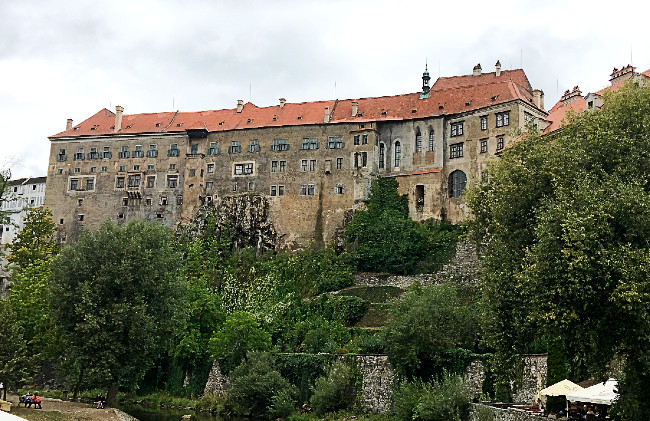
The castle area is one of the largest in central Europe. It is a complex of forty buildings and palaces built and/or remodelled from the 13th to the 19th century, situated around five castle courts and a castle park spanning an area of seven hectares. The interior of the castle can only be visited on a one-hour escorted tour, so sadly we did not have time as this was only a half-day stop.

The original Gothic castle was founded some time before 1250. The castle tower was remodelled in Renaissance style in 1591. This strikingly colorful round tower covered in trompe l’œil decoration and featuring a 162-step climb to the top, was built to guard the medieval river crossing.
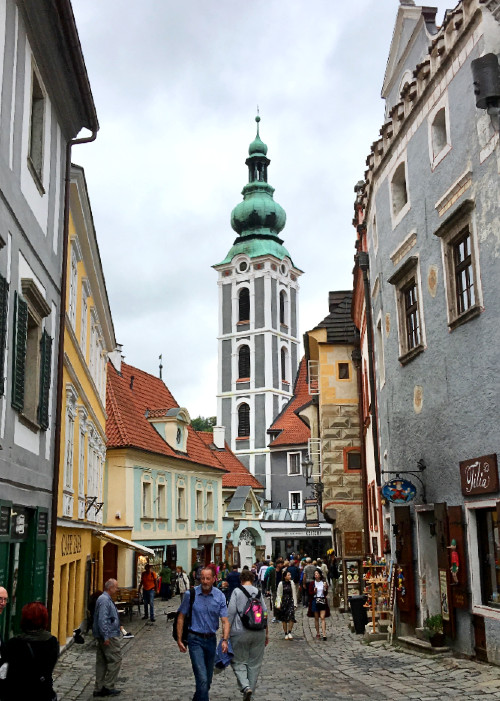
The old part of Český Krumlov is tiny, split in half by the winding river, but extremely picturesque. The castle and monastery precinct is on the northern bend, together with the Latrán district which was originally developed to service the castle.

Many of the buildings throughout the town display frescoes, such as this Rosenberg Rider at 39 Latrán, as well as painted trompe l’œil brickwork.

Then it was across a much larger bridge over the Vltava River to see the old commercial centre of town.

Here the various museums and galleries can be found as well as hotels and many restaurants. We found the inexpensive Travel Hostel Restaurant in a historic building (former stables) from the 13th century, located just a few metres from the main square (Soukenická 43) for an early lunch. We ate typical local fare – Pečená vepřová žebírka (Pork Ribs) and Bramborový knedlík plněný uzeninou (Potato dumplings stuffed with smoked meat) – and hubby enjoyed the local Eggenberg beer, while sitting in a cobble-stone courtyard.
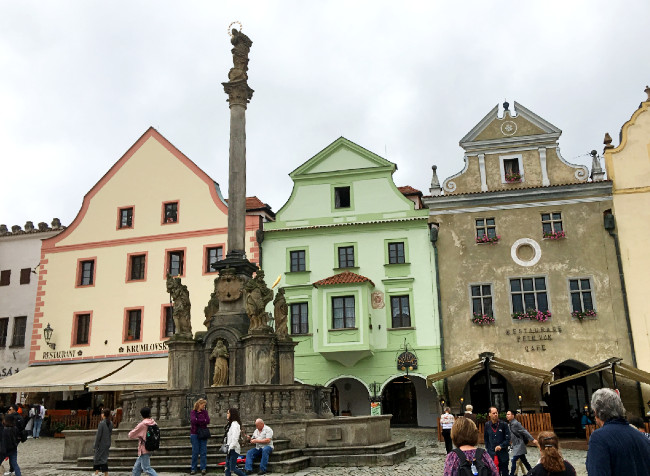
An interesting feature of the town square is the Plague Column (1716). Topped with the statue of the Virgin Mary and eight saints, the patron saints of the town, the column was created in memory of their protection against the plague. Incorporated into the base is a stone fountain, added about 1843.

The second main architectural landmark of Český Krumlov is that of St Vitus Church, begun in the Gothic style in the early 14th century but enlarged upon and embellished over time. The uppermost part of the spire is Neo-Gothic in style, dating to 1893-1894 .
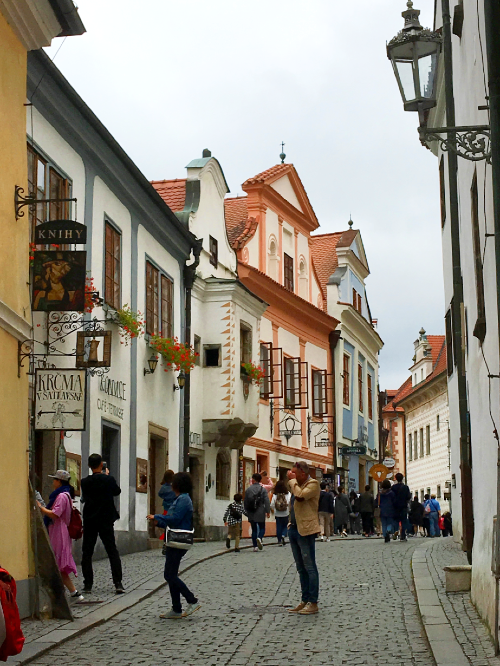
Strolling through the narrow cobblestone streets of the Old Town, tourists are captivated by the quaint atmosphere, surrounded by more than 300 well-preserved historical buildings. It’s not hard to understand why this is the Czech Republic’s second-biggest tourist magnet, after Prague.
Sadly, we had to tear ourselves away as our coach needed the whole afternoon to travel to Linz, where we were to embark again on our river Danube cruise, this time on another ship, the Emerald Star.
